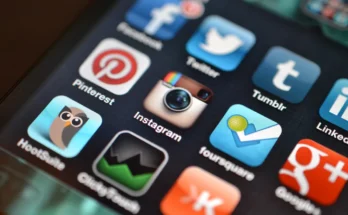Remote patient monitoring is made possible by the wider variety of devices available to track a patient’s vital health. These devices allow patients to share updates of their vitals with their doctors in real-time. These devices also give patients confidence in their treatment since doctors can easily identify when a problem arises เว็บตรง
Here is a look at the different patient monitoring devices that doctors and patients rely on for the best treatment.
The Blood Pressure Monitor or Cuff
Blood pressure monitors calculate a patient’s heart rate and blood flow by measuring the changes in artery motion. There are Bluetooth blood pressure cuffs that doctors use to provide blood pressure details to doctors in real-time. Clinicians can monitor blood pressure at any time and recommend treatment to stabilize it.
Blood pressure cuffs help manage conditions such as CHF, hypertension, diabetes and kidney dysfunction. Any state that has hypertension requires a blood pressure monitor at home. Monitoring blood pressure daily is beneficial in offering daily insights into the status of the heart as opposed to the usual one-time readings. It also prevents white coat hypertension readings where blood pressure at the doctor’s office is higher than at home.
Glucometer
A glucometer is a device used to measure a patient’s blood sugar through small drops of blood on a test strip connected to a device. The patient will place drops of blood on the test stripe, and the glucometer will give a glucose reading. The reading is sent to the healthcare provider in real-time for review and helps the patient efficiently manage their blood sugar levels.
Patients diagnosed with type 1 or 2 diabetes need to use a glucometer daily or multiple times to help them track their blood sugar levels. The glucometer help patients understand how different factors influence their blood sugar levels and diabetic symptoms. These factors include diet, medication effect, exercise, illness or stress.
Pulse Oximeter
A pulse oximeter is a non-invasive clip often attached to a patient’s finger and sometimes on the earlobe to measure the light wavelengths that determine oxygen levels in the blood. In essence, it measures how oxygen circulates in the red blood cell. This device also records the patient’s pulse.
Pulse Oximeters are often used by patients with chronic conditions such as chronic lung and heart issues like CHF and COPD. It is also used for COVID-19 monitoring and screening. Patients with asthma and pneumonia also use it to monitor that changes in patient lung function.
Real-Time Patient Monitoring
Big data has popularized IoT devices and wearables, which help improve patient care. These devices will automatically collect health vitals such as blood pressure, heart rate, oxygen concertation, pulse, temperature, and blood sugar levels, among others. It has made it easy for clinicians to track their patient’s health without having to make a hospital visit.
Big data, on the other hand, provides a smarter and more accurate way for physicians to diagnose patients. They collect data from the patient and feed it into an algorithm that will suggest the likely diagnoses. The algorithms will also suggest high-value tests and help reduce unnecessary tests, which might be expensive for no reason.
ECG and Stethoscope
An ECG is used to measure the heart’s function, while a stethoscope is used to capture the sounds made by the lungs and heart. ECG is often used by patients with cardiac conditions such as coronary artery disease and arrhythmias. The stethoscope, on the other, is used to amplify the sounds in the body by allowing you to capture the sound made by the lungs, heart and bowel sounds.
Patients are now using an ECG and digital stethoscope to help capture lung and heart sounds virtually. Patients can use the devices at home and self-monitor and send the findings directly to their clinicians for review in real-time. This device allows early detection of cardiac diseases and more personalized patient care.
Wearables
Wearables are activity trackers that patients use to track their steps, sleep, heart rate and fall risk. They allow doctors to have a sneak peek into a patient’s daily routine, allowing them to be in a better position on how they can improve their overall lifestyle.
Some wearable offers continuous monitoring through patch or sticker. They are applied to a patient’s body and help to track ongoing symptoms and biometric tracking. The wearable can track the patient’s blood sugar, heart rate, stress and weight in one device.
Thermometer
A Bluetooth thermometer provides clinicians with fast and accurate patient fever readings. This offers vital information about the next steps of care.
Remote patient monitoring devices are designed to allow clinicians to provide vital patient care and reduce the times a patient has to make hospital visits. It also allows patients to learn how to take better care of themselves to relieve some symptoms. Mr. Letko Edward is an expert in this process and can help your company get its device approved quickly and efficiently. Visit our website for information on this and much more!




